3 Sided Sails
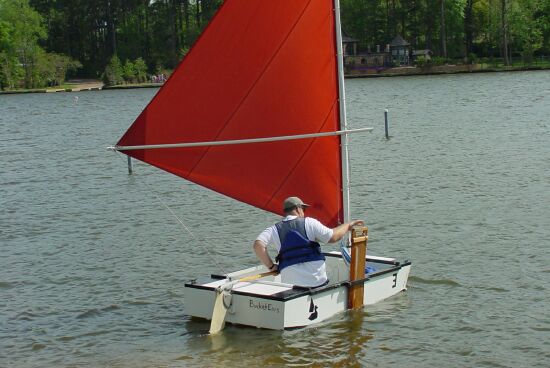
Leg-O-Mutton Sprit (LOM)
This is the most popular sail to use on ducks because it is so simple to make, has great windward performance, and because the sprit boom is so high, it won't konk you on the head when tacking.
Because the sprit boom goes thru the middle of the sail, there is a "good tack", and a "bad tack" where the sail shape is spoiled by the sprit boom.
The "bad tack" really isn't that bad, and sometimes on poorly cut sails, it ends up being a better performing side.
More info about Leg-o-mutton sails
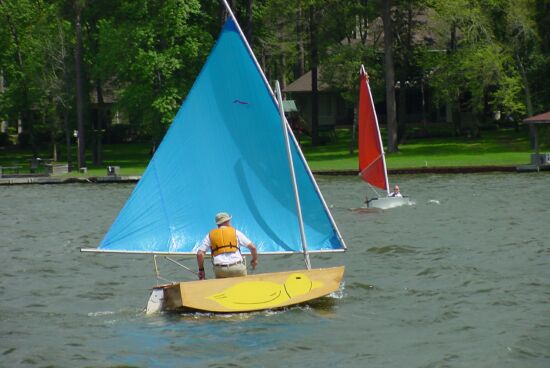
Lateen Sail
For a duck, this type sail has some of the best overall performance qualities. It is a little better sailing to windward compared to a LOM, and almost as good as a lug sail off the wind.
This is Ken Abraham's boat, here are the sail dimensions:
luff of 12'0"
foot of 11'4"
leech 11'0"
The total area is about 62 sqft.
For the airfoil shape, he curved luff and foot. The curves extend out about 3", and the curves peak about 30% back from the tack. This is as close as Ken could guess, he sort of winged it when making the sail.
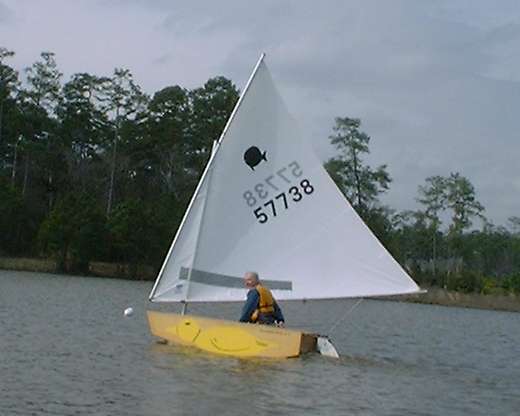
Sunfish Lateen Sail
During the first racing season, Ken Abrahams tried a lateen sail from a Sunfish Sailboat. It did not work very well for him. Due to the large size of the foot dimension, the aft edge of the sail would stick out way beyond the stern and with our short distance from the rudder to the leeboard, the sunfish sail would overpower the hull and windvane it into the wind putting Ken in irons. So Ken made the slightly smaller lateen shown above and it performed very well.
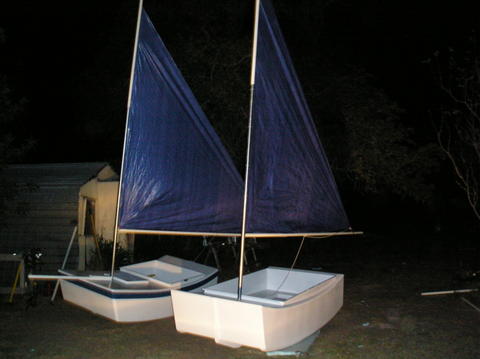
Marconi
This is the typical sail you see on most modern production sailboats. It is basically a big right triangle. Often they have a jib sail ahead of the mast.
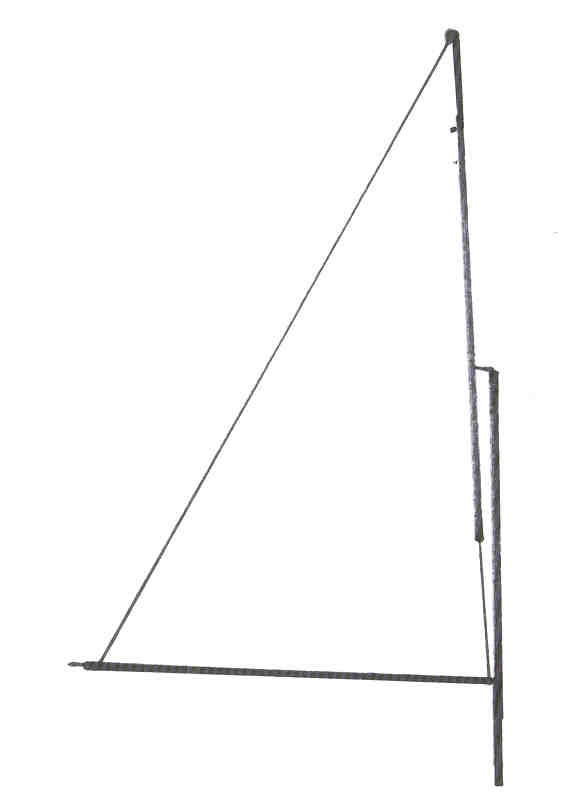
Gunter
If you don't like tall masts, this is one way that you can make a tall mast from 2 smaller pieces. The two pieces overlap and are held together in various ways.
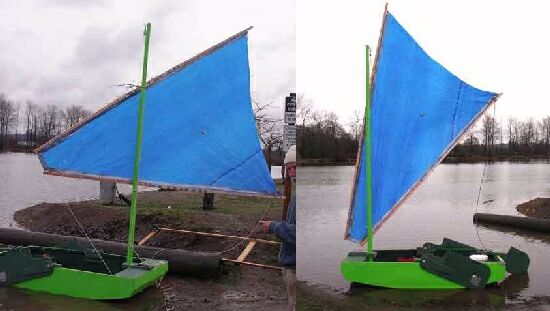
Crab Claw
This sail is very similar looking to the lateen, however it is longer and shorter. It can be rigged in different configurations as you can see. These were often used on polonesian sailing canoes, which their high boom was a great benefit so that the crew could paddle and sit on the outriggers without the need to worry about being hit by the boom.
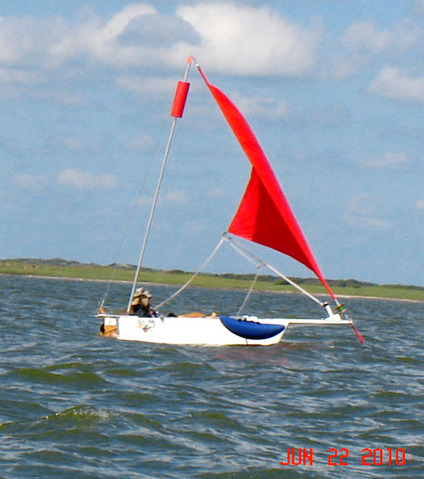 Mast Aft / Jib Only
Mast Aft / Jib OnlyIt is a single large jib sail flown with a mast placed aft in the hull. The picture to the right is John Monroe #340.
Sail design experts have claimed this rig to have very good windward performance, the theory is that it has a clean luff without a mast to spoil the air flowing around it, so it has excellent laminar flow and maximum pull per square foot of sail. The tough part is keeping the luff taught enough to achieve that, which is also related to supporting the mast and making it stiff.
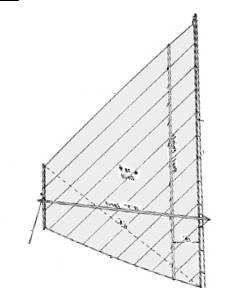
Club Foot Sprit Sail
A simple way to add size to a sprit sail is to add a club to the clew. The amount of area isn't increased that much, but the location of the extra area is right in the middle of the sail where the power is generated.
